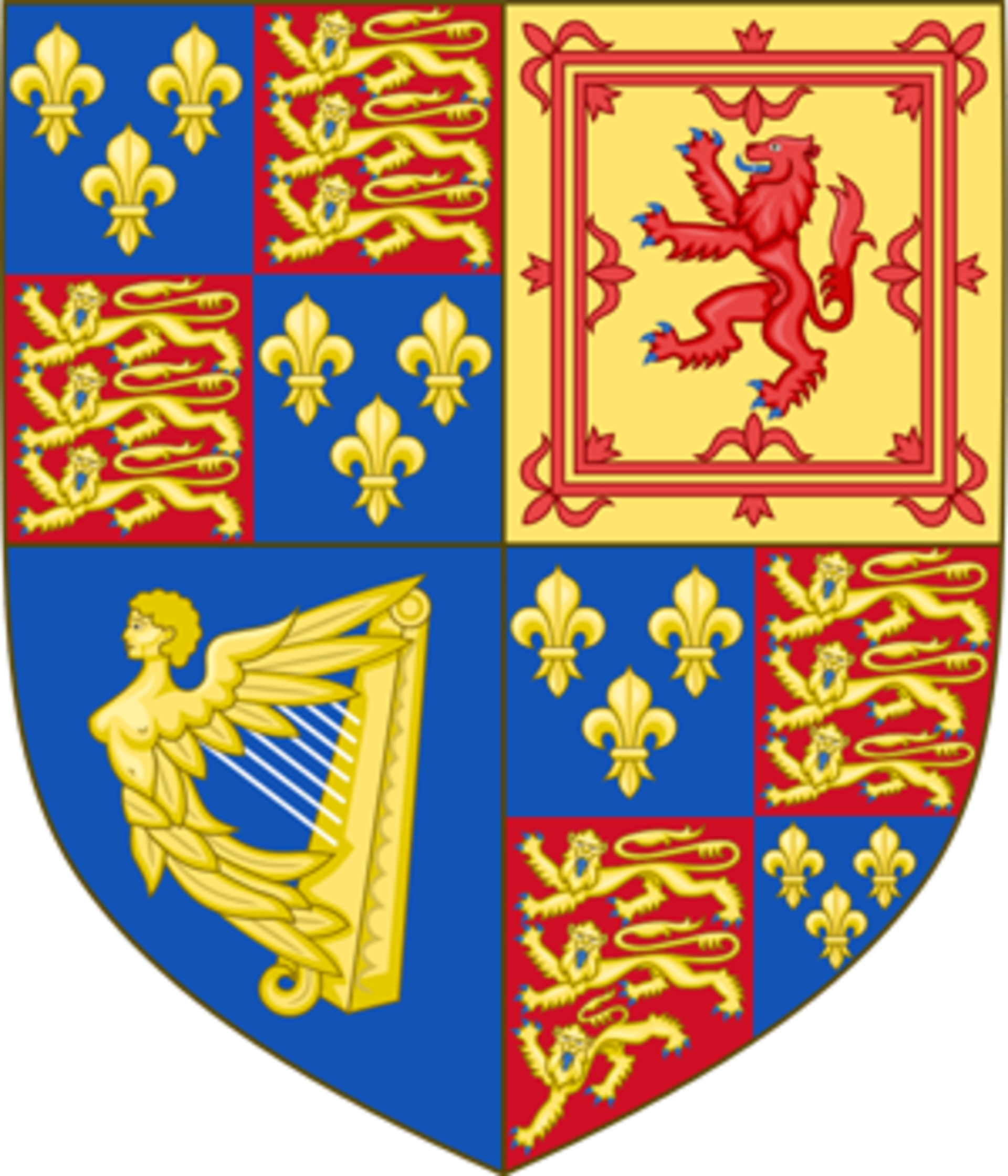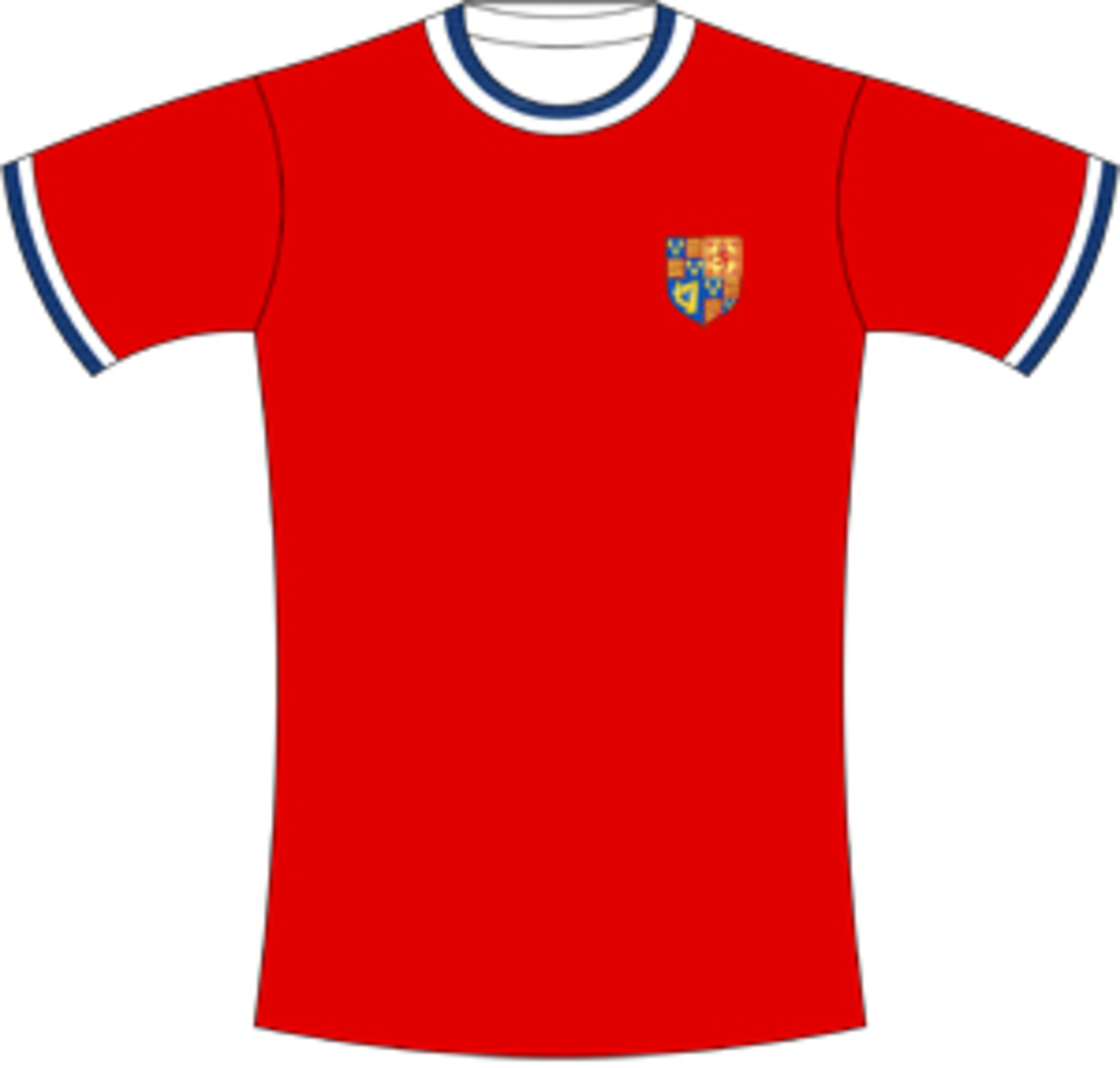Union of the Crowns
Acceptance of the Reformation during the 16th c. somewhat created common interests with the English and Scottish elites to bring the two countries together in the early 17th century. They had created a personal union (1603) when the Scottish King James of the Stuart Dynasty ascended the English throne.

Coat of arms

Shirt
| Position | First name | Last name | Mjesto rođenja | Like | Dislike | |
|---|---|---|---|---|---|---|
| GK | Joe | HART | Shrewsbury |
14 |
6 |
|
| GK | Jordan | PICKFORD | Washington |
28 |
9 |
|
| DC | Chris | SMALLING | London |
6 |
9 |
|
| DC | Gary | CAHILL | Dronfield |
8 |
3 |
|
| DRC | John | STONES | Barnsley |
19 |
1 |
|
| DR | Nathaniel | CLYNE | Stockwell |
3 |
1 |
|
| DR/MR | Kyle | WALKER | Sheffield |
17 |
3 |
|
| DL | Andrew | ROBERTSON | Glasgow |
19 |
0 |
|
| DL | Danny | ROSE | Doncaster |
10 |
4 |
|
| DL | Luke | SHAW | Kingston upon Thames |
13 |
3 |
|
| DRC/DMC | Eric | DIER | Cheltenham |
18 |
3 |
|
| DRC/DMC | Phil | JONES | Preston |
7 |
1 |
|
| DMC | Jordan | HENDERSON | Sunderland |
23 |
6 |
|
| MC | Jack | WILSHERE | Stevenage |
8 |
8 |
|
| MC | James | McCARTNEY | Glasgow |
1 |
0 |
|
| MRLC | Aaron | RAMSEY | Aaron |
14 |
0 |
|
| MRLC/DL | James | MILNER | Leeds |
4 |
2 |
|
| AMC | Adam | LALLANA | St.Albans |
11 |
11 |
|
| AMC | Dele | ALLI | Milton Keynes |
22 |
8 |
|
| AMC | Ross | BARKLEY | Liverpool |
6 |
3 |
|
| AMRLC | Alex | OXLADE-CHAMBERLAIN | Portsmouth |
12 |
1 |
|
| AMRL | Gareth | BALE | Cardiff |
22 |
2 |
|
| AMRL | Oliver | BURKE | Kirkcaldy |
0 |
0 |
|
| AMR/DR | Michail | ANTONIO | London |
5 |
3 |
|
| AMRL/FC | Theo | WALCOTT | Stanmore |
5 |
2 |
|
| SS/FRLC | Wayne | ROONEY | Liverpool |
21 |
5 |
|
| FRLC | Daniel | STURRIDGE | Birmingham |
15 |
4 |
|
| FRLC | Danny | WELBECK | Manchester |
6 |
2 |
|
| FRLC | Marcus | RASHFORD | Manchester |
19 |
3 |
|
| FC | Harry | KANE | Chingford |
20 |
4 |
|
| FC | Jamie | VARDY | Sheffield |
14 |
3 |
(Today Part: England, Scotland, Wales)
After the unification of the English and Scottish crowns, the term '' King of Great Britain '' became popular. In general, the character of the rule in England depended on the person of the king, and this was of particular importance for the stability of the country, given that personal relations between the king and high nobles were crucial to political progress. James I (r. 1603-1625) was influenced by ideas from the continent, so he emphasized the divine inspiration of the monarchy, and his son Charles I (r. 1625-1642) usually emphasized the "emperor's emperor" and the subject of duty. In addition, tolerance towards Catholics led to a long-standing citizen king with Parliament with whom the conflicts in Scotland and Ireland in 1638-1651 would be linked. Parliament won for many reasons: it had the support of the richest parts of the country, Scots, London, major ports and navy, and because of the religious passion of its supporters. Its leader, Cromwell, regarded himself as God's chosen executor, destined to overthrow religious and political tyranny.
Following the public execution of King Charles II, the republican regime (1649-60) was marked by the beginning of the war with the Netherlands, radical political and conservative religious ideas. Nevertheless, the monarchy was restored in 1660, but from then on it continued to exist provided it accepted the will of the people as expressed through Parliament. The recognition of freedom of religion and the participation of public opinion in political struggles through the precursors of parties (Wiggis and Tories) made England a unique example of a rule based on freedom and conflict, but at the same time the cooperation of the King and Parliament.
Sources
- Jeremy BLACK, Povijest Britanskih otoka, Zagreb, 2004.
- Felipe FERNANDEZ-ARMESTO, Narodi Europe, Zagreb, 1997.
- Grupa autora, Povijest: Počeci novog doba (16. stoljeće), knjiga IX., Zagreb 2008.
- Adrian HASTINGS, Gradnja nacionaliteta , Rijeka, 2003.
- Coat of amrs: https://en.wikipedia.org/wiki/Royal_Arms_of_England
